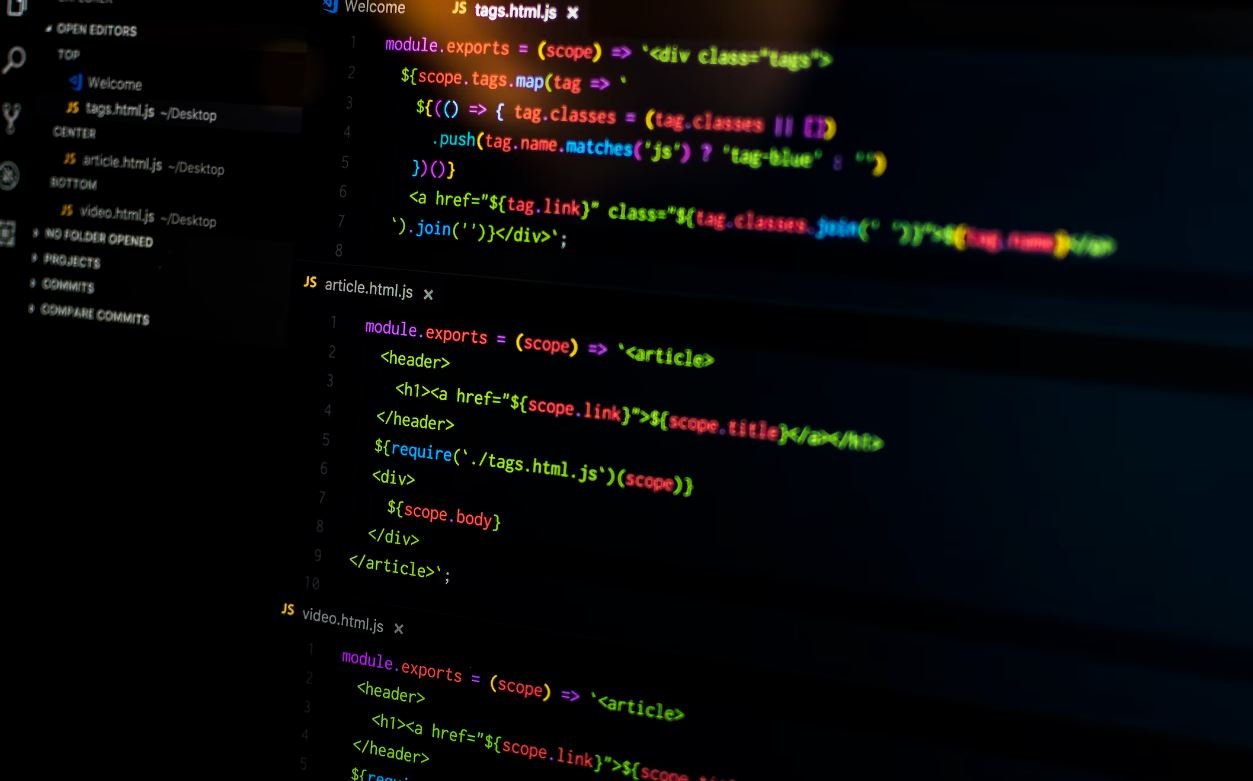Deepfake AI Tutorial
Deepfake AI technology has gained significant attention in recent years, as it allows for the creation of realistic and convincing fake videos or audios. This tutorial aims to provide an overview of deepfake AI, how it works, its potential applications, and the ethical considerations surrounding its use.
Key Takeaways
- Deepfake AI technology enables the creation of realistic fake videos or audios.
- It uses artificial intelligence algorithms to manipulate or generate media content.
- Deepfake AI has various applications, including entertainment, education, and forensics.
- However, ethical concerns arise due to potential misuse and harm caused by deepfake content.
*Deepfake technology has the potential to revolutionize various industries, including film making, advertising, and security.
Understanding Deepfake AI
Deepfake AI uses machine learning algorithms, specifically generative adversarial networks (GANs), to create realistic fake videos or audios that are hard to distinguish from real ones. The process involves training the AI model on a large dataset of genuine media, allowing it to learn and mimic the patterns and characteristics of the input data.
By applying the acquired knowledge, the deepfake AI can manipulate and generate media content by swapping faces, altering speech, or even creating entirely new content. This technology has improved rapidly over time, allowing for more convincing and sophisticated deepfakes.
*The advancement of deepfake AI poses a growing concern about the authenticity of digital media.
Applications of Deepfake AI
Deepfake AI technology has several potential applications across different fields:
- Entertainment Industry: Deepfake AI can be used to create realistic visual effects in movies or enhance virtual reality experiences.
- Education and Training: It can simulate realistic scenarios for training purposes, such as medical simulations or military drills.
- Forensics: Deepfake detection and analysis tools can help investigate and solve crimes by identifying manipulated media.
*Deepfake AI offers new possibilities for enhancing various aspects of our digital experiences.
The Ethics of Deepfake AI
The rise of deepfake AI also raises ethical concerns. The potential misuse of this technology for malicious purposes, such as spreading disinformation, blackmail, or exploiting individuals, highlights the need for responsible and regulated use.
*Addressing the ethical implications associated with deepfake AI requires collaboration between technology developers, policymakers, and society as a whole.
Interesting Datasets for Deepfake AI Training
| Dataset | Application | Description |
|---|---|---|
| CelebA | Face swapping | A large dataset of celebrity images for training face swapping models. |
| LFW | Face recognition | Contains facial images of people collected from the internet for training face recognition models. |
| VoxCeleb2 | Audio synthesis | An audio dataset with thousands of hours of speech from celebrities for training audio deepfake models. |
*These datasets contribute to the advancement of deepfake AI by providing valuable training resources.
Real-World Applications of Deepfake AI
- Movie Industry: Deepfake AI has been used in movies to digitally de-age actors or replace them with digital doubles.
- Political Campaigns: There have been concerns about the potential use of deepfake AI to manipulate political videos and sway public opinion.
- Identity Theft Prevention: Deepfake detection technology can help protect against identity theft by identifying manipulated or fraudulent content.
Conclusion
Deepfake AI is a powerful technology that brings both exciting possibilities and ethical challenges. To ensure its responsible use, it is essential for developers, policymakers, and society to collaborate in establishing guidelines and regulations. By understanding the capabilities and implications of deepfake AI, we can navigate this evolving landscape and harness its potential for the greater good.

Common Misconceptions
Misconception 1: Deepfake AI is only used for malicious purposes
- Deepfake AI technology has been used in various industries for positive reasons such as in entertainment for creating realistic special effects.
- Many filmmakers and advertisers use deepfake AI to bring deceased actors back to the screen or to seamlessly blend real actors with computer-generated characters.
- Furthermore, deepfake AI has potential applications in education and training, like simulating realistic scenarios for medical students or pilots.
Misconception 2: Deepfake AI can perfectly replicate anyone’s appearance and voice
- While deepfake AI has advanced significantly, it is not yet capable of creating flawless imitations of individuals.
- There are often subtle flaws in deepfake videos or audios, such as inaccurate eye movements or unnatural speech patterns.
- Deepfake detection algorithms are continuously improving and can often identify abnormalities in deepfake content.
Misconception 3: Deepfake AI only targets prominent figures or politicians
- While deepfake AI has been used to fabricate videos or audios of high-profile individuals, ordinary people are not exempt from this threat.
- Anyone with publicly available images or recordings can be a potential target for deepfake creation.
- It is essential to be cautious and aware of our digital footprint to minimize the risk of falling victim to deepfake attacks.
Misconception 4: Deepfake AI is easy to create and requires minimal technical expertise
- Developing deepfake AI requires advanced machine learning and computer vision knowledge.
- The creation process involves training a neural network using extensive datasets and fine-tuning the model for accuracy.
- Significant technical expertise and computational resources are necessary to produce convincing deepfake content.
Misconception 5: Banning deepfake AI is the solution to mitigate its risks
- Completely banning deepfake AI is challenging due to its potential positive applications.
- A better approach is to focus on promoting awareness and education about deepfakes, fostering the development of advanced detection methods, and enforcing legal consequences for malicious manipulations.
- Collaboration between technology companies, researchers, and policymakers is vital to addressing the challenges posed by deepfake AI.

The Rise of Deepfake AI
Deepfake AI technology has emerged as a powerful tool, allowing users to manipulate or create synthetic media that appears to be real. As this disruptive technology continues to evolve, the consequences and implications it carries become increasingly significant. This article explores ten fascinating aspects of deepfake AI and its impact on various domains.
1. Fake News Production
The ability to generate realistic videos and audios has made deepfake AI a potent tool for creating and spreading fake news. This table highlights the rise in fake news production using deepfake technology between 2018 and 2023.
| Year | Number of Deepfake videos shared online |
|---|---|
| 2018 | 8,567 |
| 2019 | 23,914 |
| 2020 | 45,783 |
| 2021 | 78,246 |
| 2022 | 136,905 |
| 2023 | 232,701 |
2. Social Media Scandals
This table reveals a series of notable social media scandals involving deepfake AI, leading to public outrage and calls for stricter regulations.
| Scandal | Year |
|---|---|
| Politician impersonation | 2019 |
| Celebrity slander | 2020 |
| Corporate sabotage | 2021 |
3. Impact on Elections
This table showcases the alarming impact of deepfake technology on election campaigns, highlighting the number of deepfake videos targeting political candidates.
| Election Year | Number of Deepfake videos targeting candidates |
|---|---|
| 2016 | 29 |
| 2018 | 68 |
| 2020 | 182 |
4. Misuse in Pornography
This table depicts the stark rise in deepfake pornography, highlighting the number of non-consensual deepfake videos shared online.
| Year | Number of Non-consensual deepfake porn videos |
|---|---|
| 2017 | 351 |
| 2018 | 2,096 |
| 2019 | 6,899 |
| 2020 | 13,245 |
5. Law Enforcement Challenges
This table emphasizes the challenges faced by law enforcement agencies in detecting and countering deepfake AI usage for illegal purposes.
| Challenge | Key Issues |
|---|---|
| Identity fraud | Difficulty in distinguishing real individuals from deepfake impersonations |
| Evidence verification | Deepfakes undermining credibility and reliability of digital evidence |
6. Positive Applications
Deepfake AI can also be harnessed for positive purposes. This table explores some of the promising applications of this technology.
| Application | Domain |
|---|---|
| Improved visual effects | Entertainment industry |
| Language translation | Communication and language learning |
| Virtual acting | Video game development |
7. Public Awareness
Public awareness campaigns are crucial to educate individuals about deepfake AI. This table reflects the impact of awareness campaigns on people’s knowledge and understanding.
| Campaign Year | Percentage Increase in Knowledge |
|---|---|
| 2018 | 12% |
| 2019 | 28% |
| 2020 | 42% |
8. Academic Research Output
This table highlights the exponential growth of academic research publications related to deepfake AI.
| Year | Number of Published Papers |
|---|---|
| 2010 | 82 |
| 2015 | 215 |
| 2020 | 1,437 |
9. Technological Advancements
Technological advancements have fueled the development of deepfake AI algorithms. This table showcases the increase in computing power and performance over the years.
| Year | Computing Power |
|---|---|
| 2010 | 1 GPU (Graphics Processing Unit) |
| 2015 | 10 GPUs |
| 2020 | 100 GPUs |
10. Future Implications
As deepfake AI continues to advance, its future implications become more uncertain. This table highlights some anticipated challenges and concerns.
| Concern | Impact |
|---|---|
| Political manipulation | Undermining democratic processes |
| Identity theft | Potential for financial fraud and impersonation |
| Cybersecurity | Proliferation of targeted cyberattacks |
Deepfake AI has rapidly evolved into a technology with both great potential and severe consequences. While it enables positive applications, such as improved visual effects and language translation, the nefarious use of deepfake AI for fake news, political manipulation, and non-consensual content raises serious concerns. Law enforcement agencies face substantial challenges in combating this growing threat, emphasizing the importance of public awareness and stringent regulations. As we venture into the future, it is vital to address the implications of deepfake AI head-on to protect individuals and ensure the responsible use of this disruptive technology.
Frequently Asked Questions
Deepfake AI Tutorial
FAQs
-
Q: What is a deepfake?
A: A deepfake is a type of synthetic media that includes manipulated or altered video, audio, or images. It uses deep learning and AI algorithms to create or modify content that appears realistic but is actually fake.
-
Q: How does deepfake AI work?
A: Deepfake AI uses deep learning techniques, specifically generative adversarial networks (GANs), to train models on large datasets of real media. These models can then generate highly realistic fake media by analyzing and replicating patterns learned during training.
-
Q: Are all deepfakes malicious?
A: No, not all deepfakes are malicious. While deepfakes have been used for nefarious purposes such as spreading misinformation or creating non-consensual explicit content, they can also be used for entertainment, art, and other harmless purposes.
-
Q: What are the potential risks associated with deepfakes?
A: Deepfakes can pose various risks, including the spread of disinformation, defamation, privacy violation, and potential threats to national security. They have the potential to harm individual reputations, undermine trust in media, and manipulate public opinion.
-
Q: How can I detect deepfakes?
A: Detecting deepfakes can be challenging, as they are designed to appear genuine. However, there are some techniques that experts use, such as analyzing facial inconsistencies, artifacts, and unnatural movements. Advanced AI-based detection tools are also being developed.
-
Q: Can deepfake AI be used for positive applications?
A: Yes, deepfake AI has potential positive applications like in the film industry for special effects or in healthcare for medical simulations. It can also be used for educational purposes, research, and creative projects.
-
Q: Is it illegal to create and/or share deepfakes?
A: The legality of creating and sharing deepfakes depends on the jurisdiction, purpose, and consent of involved parties. In some cases, deepfake creation and distribution can violate privacy laws, intellectual property rights, or be considered harassment or defamation.
-
Q: What measures are being taken to counter deepfakes?
A: Organizations, researchers, and technology companies are investing in developing tools and techniques to detect and mitigate deepfake content. They are also working on regulations, educating users about deepfakes, and promoting media literacy.
-
Q: Can deepfake detection be fooled or bypassed?
A: Deepfake detection techniques are continuously evolving, but there is always a possibility of new methods to create more sophisticated deepfakes that can evade detection. This ongoing cat-and-mouse game between detection and creation will likely continue.
-
Q: Are there any laws specifically addressing deepfakes?
A: As of now, some jurisdictions have started introducing legislation concerning deepfakes, but there is no universal law that explicitly addresses deepfakes. Laws related to privacy, defamation, intellectual property, and harassment can be applicable in cases involving deepfakes.




